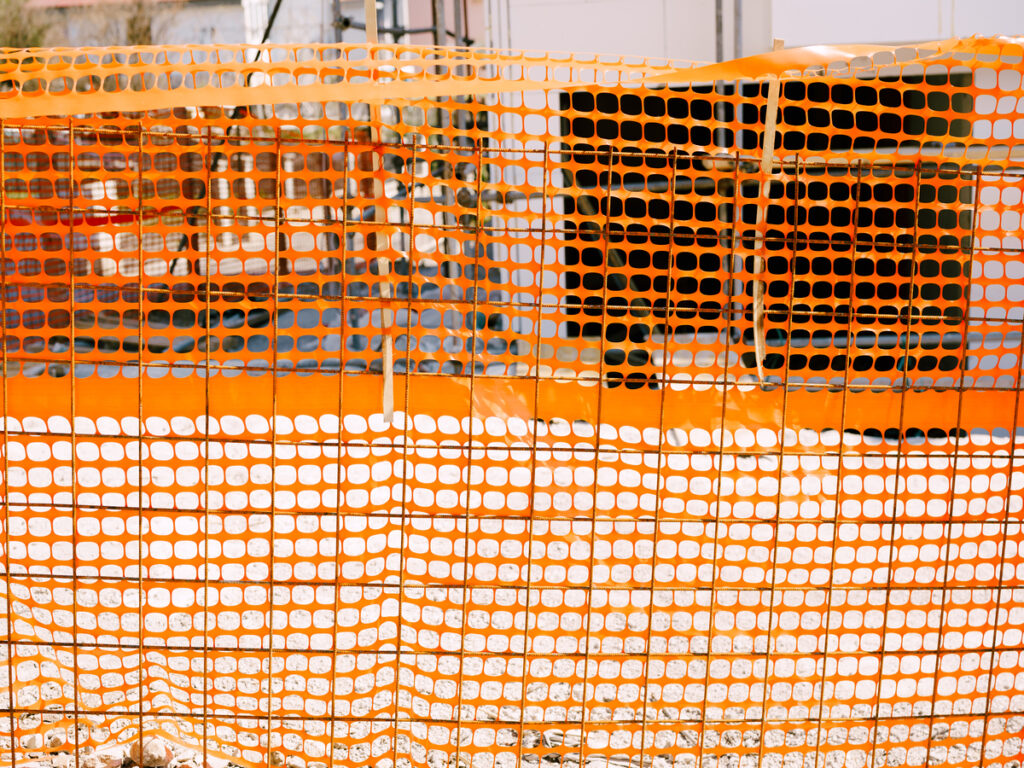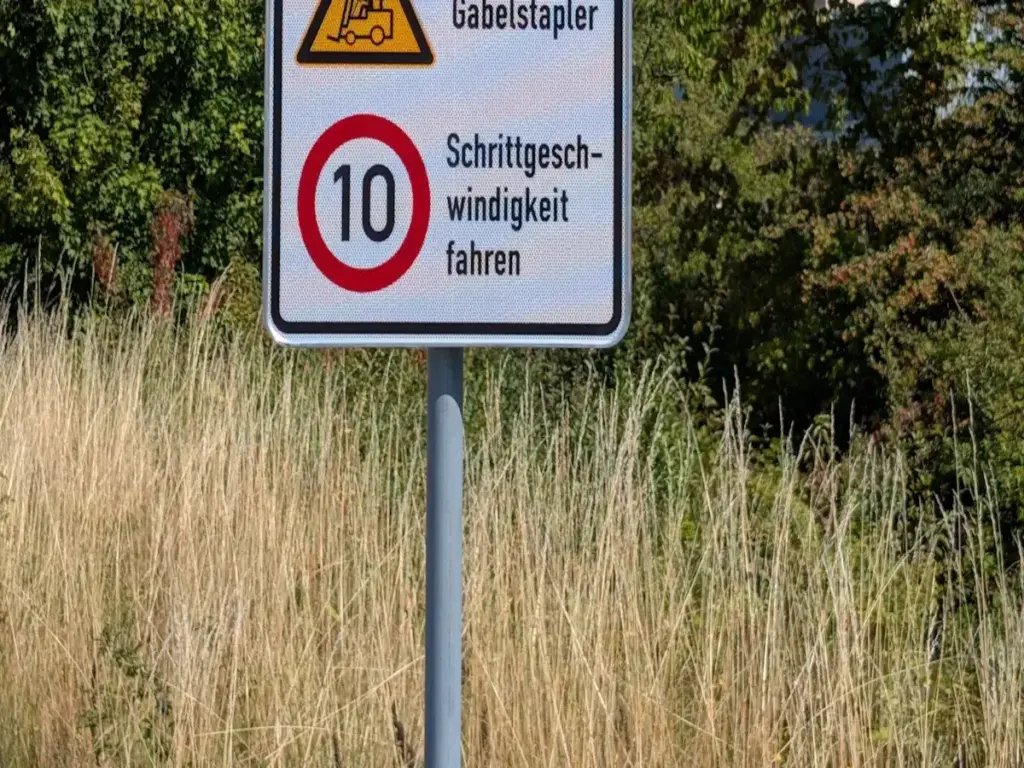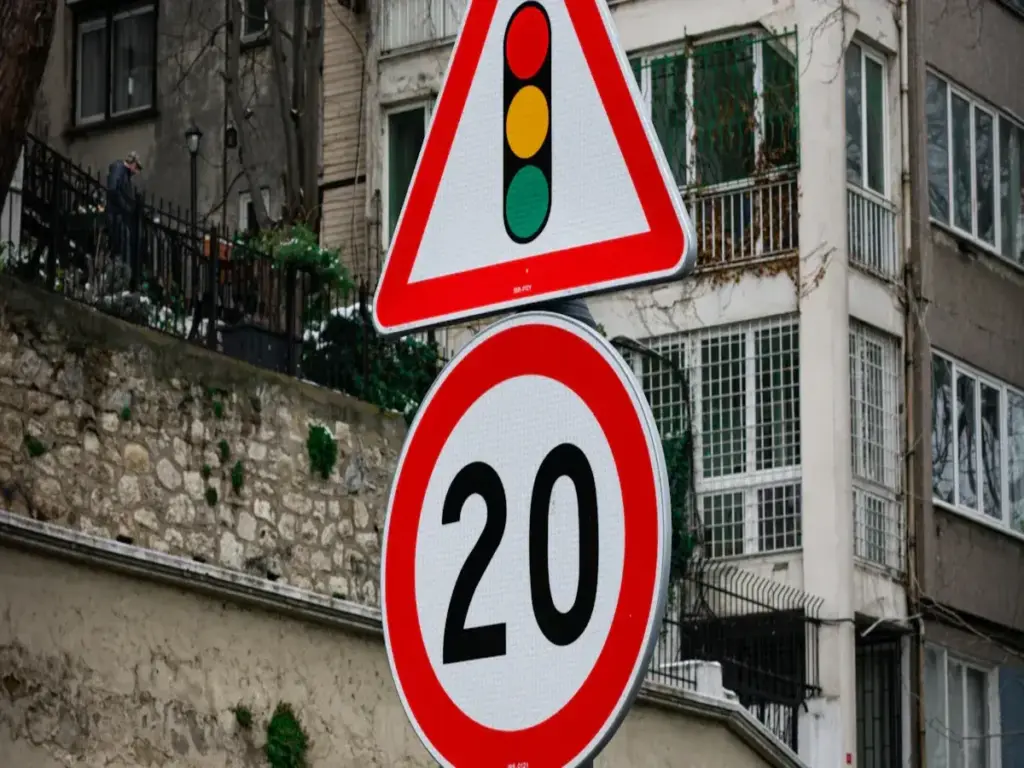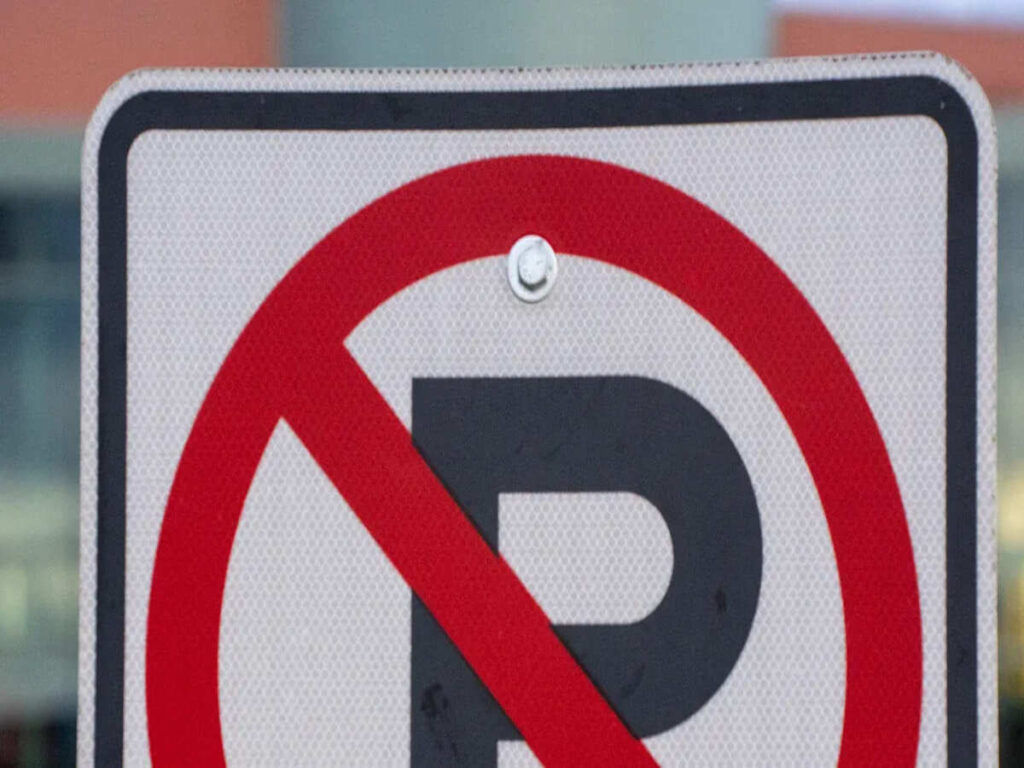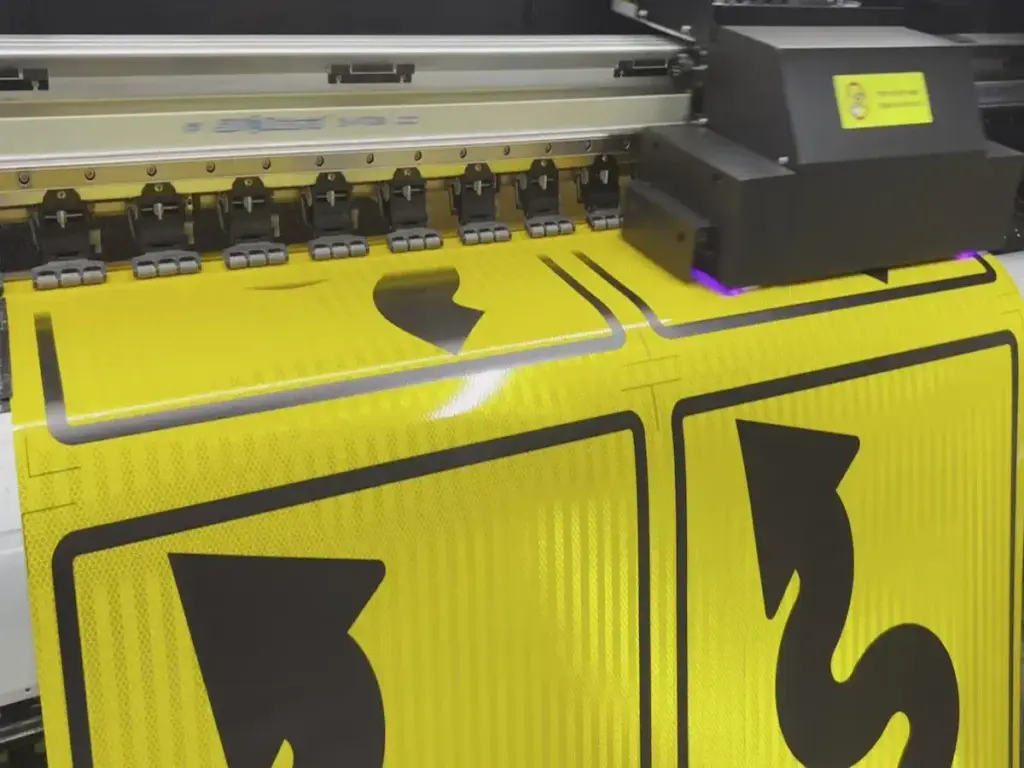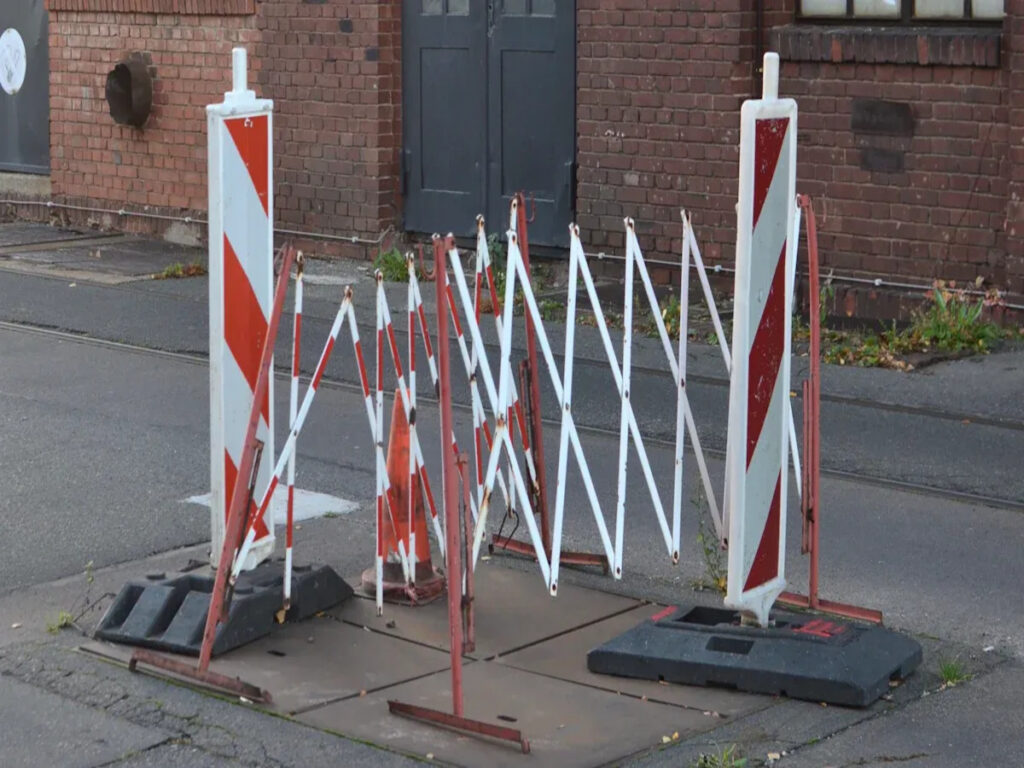
Современные материалы и технологии меняют дорожные баррикады в Австралии. Эти барьеры теперь оснащены энергосберегающими светодиодными фонарями, которые работают в любую погоду., что делает их более заметными для водителей и пешеходов. Умные системы ограждения дорожного движения, использование искусственного интеллекта и Интернета вещей, предоставлять обновления в режиме реального времени, повышение безопасности. Кроме того, барьеры создаются более сильными, перерабатываемые материалы, которые не только повышают долговечность, но и поддерживают экологические цели Австралии.. Модульные барьеры теперь легче устанавливать, и их можно адаптировать в соответствии с различными требованиями безопасности дорожного движения.. Эти инновации способствуют повышению безопасности, более эффективные дороги для всех.
Ознакомьтесь с линейкой передовых технологий OPTRAFFIC. дорожные баррикады разработан с использованием новейших технологий и материалов для обеспечения максимальной безопасности и соответствия австралийским стандартам..
Ключевые выводы
- В современных дорожных баррикадах в Австралии используются прочные и легкие материалы.. Эти материалы могут быть переработаны. Они служат дольше и их легче перемещать.. Это помогает работникам быстрее создавать более безопасные дороги..
- У умных баррикад есть датчики, Светодиодные огни, и технологии искусственного интеллекта. Благодаря этим функциям их легче увидеть.. Они предупреждают людей об опасностях. Они помогают снизить количество аварий. Это делает дороги более безопасными для всех.
- Энергопоглощающие конструкции и модульные барьеры защищают людей. Они делают последствия аварии менее серьезными. Они могут меняться в соответствии с различными потребностями в области безопасности дорожного движения..
- Новые стандарты и правила гарантируют, что барьеры будут четкими и сильными.. Они также следят за тем, чтобы барьеры везде были одинаковыми.. Это помогает обеспечить безопасность рабочих и водителей по всей Австралии..
- Есть некоторые проблемы, но будущие транспортные баррикады станут умнее. Они будут работать с новыми технологиями. Это поможет сделать дороги безопаснее и лучше для окружающей среды..
Эволюция барьеров безопасности
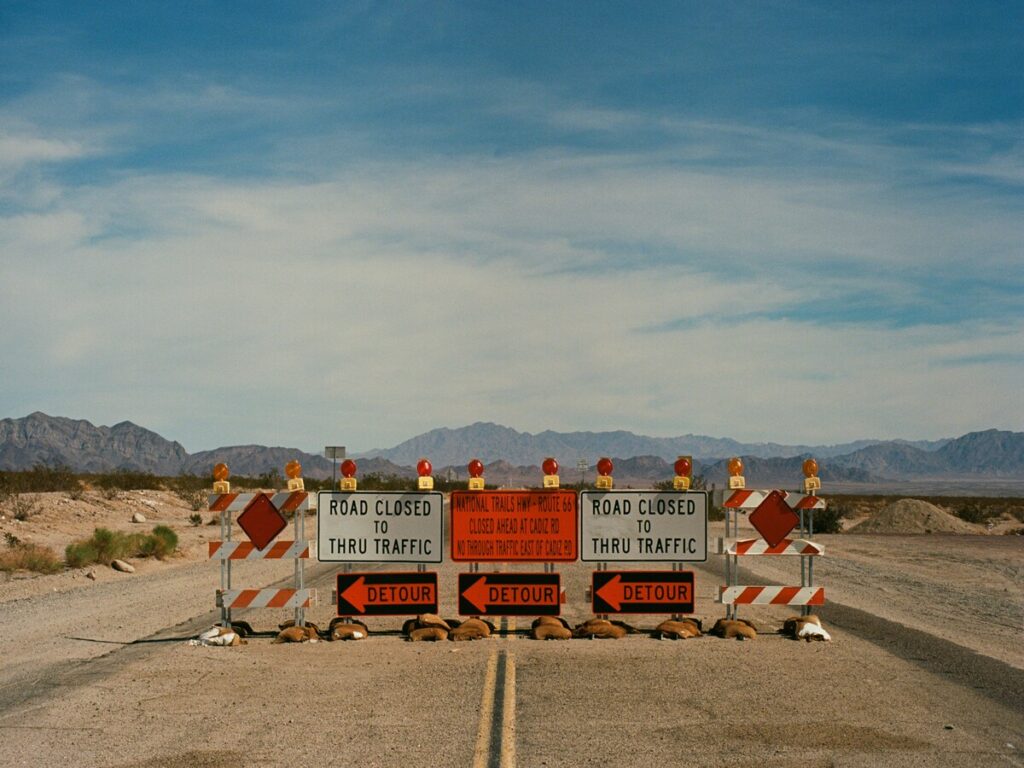
Ранние конструкции дорожных баррикад
В Австралии, первые дорожные баррикады были сделаны из дерева и металла.. Рабочие использовали их, чтобы показать, где находятся строительные зоны.. Они также помогали уводить автомобили от опасности.. Эти старые барьеры было трудно увидеть, Особенно ночью. Многие не смогли справиться с суровой погодой в Австралии. Сильный дождь или сильный ветер могут сломать или сдвинуть их.. Вскоре люди поняли, что необходима лучшая безопасность.. Промышленность начала использовать бетон и сталь для большей защиты.. Бетон и сталь используются до сих пор.. Но сейчас, популярны более легкие и простые в перемещении барьеры. Эти новые барьеры помогают работникам быстро устанавливать и снимать их.. Они также делают аварии менее опасными для работников.. Тип 3 Баррикады а канализаторы по-прежнему помогают направлять машины в рабочие зоны. Современные барьеры теперь обеспечивают большую безопасность и работают лучше..
Нормативные изменения и стандарты
Правительство Австралии изменило многие правила для барьеров безопасности. Австралийский стандарт как 1742 серия ввела новые правила для устройств регулирования дорожного движения. Эти правила сделали барьеры более заметными и более прочными.. В таблице ниже показаны некоторые важные изменения.:
| Нормативный аспект | Перед обновлением | После обновления |
|---|---|---|
| Отражательная способность | Плохая видимость ночью | Повышенная видимость в любое время, соответствует AS/NZS 1906.1 |
| Ясность сообщения | Слишком многословно и запутанно | Прозрачный, простой, и важная информация |
| Долговечность | Подвержен погодным повреждениям | Использование сильных, Погодные материалы |
| Конструкция дизайна | Разнообразные шрифты, цвета, и символы | Стандартизированные шрифты, цвета, и символы на всех знаках |
КАК 1742.1 дал четкие правила, где ставить знаки и на какой высоте они должны быть. КАК 1742.3 установлены правила размещения знаков во временных рабочих зонах. Это помогло обеспечить безопасность работников и лучше направлять водителей.. Сейчас, проверки проводятся часто, чтобы убедиться, что барьеры соответствуют этим правилам.. Такие группы, как Auustroads и подход Safe System, помогли изменить барьеры безопасности.. Подход «Безопасная система» зародился в 2003. Он пытается сделать аварии менее серьезными, глядя на автомобили., дороги, скорость, и как люди действуют. Этот план помогает разработать правила безопасности дорожного движения и строительные стандарты в Австралии.. Эксперты считают систему Safe System умной и полезной. Это помогает им использовать технологию барьеров безопасности в реальной работе.. Эти изменения сделали барьеры в Австралии более заметными., сильнее, и безопаснее для всех.
Инновации в материалах в дорожных баррикадах
Композиты и пластмассы
За последние десять лет Австралия внесла много изменений в материалы дорожных ограждений.. Производители теперь используют легкие и прочные материалы, такие как алюминий и полиэтилен высокой плотности (ПНД). Эти материалы не ржавеют и их легко перемещать.. Композитные материалы прочные, но не тяжелые., чтобы рабочие могли быстро переносить и устанавливать их. Это делает дороги безопаснее и помогает работникам быстрее завершить работу..
В таблице ниже показано сравнение различных материалов.:
| Тип материала | Долговечность & Продолжительность жизни | Ключевые характеристики & Примечания по безопасности |
|---|---|---|
| Алюминиевый композитный материал (ACM) | Высокая долговечность, 5+ годы | Свет, жесткий, не повреждается солнцем и водой, сохраняет свой внешний вид и прочность, безопасен и может быть переработан. |
| Пластмассы (НАПРИМЕР., Корфлут, доска из пенопласта ПВХ) | Низкая долговечность, меньше, чем 5 годы | Свет, простой в использовании, но может погнуться или сломаться, если станет горячим. Подходит для коротких работ. |
| Традиционные металлы (Сталь, Алюминий) | Очень высокая долговечность, несколько лет | Сталь очень прочная и используется для изготовления противотаранных барьеров для транспортных средств и аварийных барьеров.. Алюминий не ржавеет и прослужит долго.. Оба могут быть переработаны. |
Композитные барьеры сильны, безопасный, И лучше для окружающей среды. Сталь по-прежнему необходима для противотаранных транспортных барьеров в местах с повышенным риском. Пластмассы лучше всего подходят для коротких работ или в местах с меньшей опасностью..
Устойчивое развитие и переработка
Создание барьеров в Австралии теперь направлено на то, чтобы принести пользу окружающей среде.. Во многих барьерах используются переработанные материалы, такие как алюминий и полиэтилен высокой плотности.. Алюминий особенный, потому что он прочный, не повреждается погодными условиями, и его легко переработать. Утилизация алюминия использует гораздо меньше энергии, чем создание нового алюминия, что означает меньше загрязнения. Большая часть когда-либо произведенного алюминия используется до сих пор..
Производители также используют переработанный пластик и материалы растительного происхождения в барьерах.. Пластики ПЭТ и ПНД перерабатываются чаще., так они лучше для природы. Композитные барьеры, как алюминиевые композитные панели, может длиться до 20 лет и могут быть переработаны для получения как алюминия, так и пластика.. Но переработка барьеров, сделанных из многих слоев или мягкого пластика, по-прежнему затруднена, поскольку для этого недостаточно мест..
Советы и рабочие в Австралии теперь выбирают барьеры, которые служат дольше и их легче перерабатывать.. Это помогает не допускать попадания мусора на свалки и позволяет использовать вещи снова и снова.. Промышленность и правительство работают над тем, чтобы улучшить переработку отходов и использовать более экологически чистые материалы в противотаранных автомобильных заграждениях и других дорожных баррикадах..
Инновационные технологические достижения
Умные баррикады и Интернет вещей
Австралия является лидером в использовании новых технологий для обеспечения безопасности дорожного движения.. Умные дорожные барьеры теперь используют Интернет вещей, Ай, и машинное обучение сделают дороги безопаснее. Эти барьеры собирают оперативные данные и отправляют их в центры управления дорожным движением.. Это помогает работникам и чиновникам действовать быстро в случае аварий или изменений на дороге..
- Датчики Интернета вещей в интеллектуальных барьерах обнаруживают опасности и предупреждают водителей и рабочих.
- Видеоинструменты с искусственным интеллектом и периферийные вычисления помогают обнаруживать объекты и быстро управлять трафиком..
- Автоматическое распознавание номерных знаков и доступ RFID делают работу безопаснее и быстрее..
- Передовые датчики и средства связи позволяют барьерам работать вместе в системах умного города..
- 5G позволяет барьерам транслировать видео и наблюдать за ним издалека.
В умных барьерах используются яркие светодиодные фонари и датчики, которые помогают людям лучше видеть., даже ночью или в плохую погоду. Эти новые идеи помогают сократить количество несчастных случаев почти на 25% и вызвать серьезные сбои 36% реже. Динамические барьеры могут менять направление движения, когда дороги загружены., что помогает движение транспорта и предотвращает пробки. Автоматизированные и адаптивные шлагбаумы используют данные о дорожном движении в реальном времени, чтобы обеспечить безопасность и бесперебойную работу дорог..
Умные технологии превращают барьеры из простых блоков в активных защитников, которые помогают людям и контролируют движение транспорта.. Эти новые идеи помогут Австралии построить более безопасные и умные города..
В таблице ниже показаны некоторые явные преимущества интеллектуальных функций в дорожных барьерах.:
| Аспект производительности | Описание | Пример/Результат |
|---|---|---|
| Динамическое перераспределение полосы движения | В часы пик подвижные разделители полос перемещаются в сторону более интенсивного движения.. | Увеличенная пропускная способность полосы, уменьшение количества замятий |
| Уменьшение перегрузок | Сравнение данных о трафике до и после внедрения. | Более высокие средние скорости, меньше задержек в пути |
| Улучшения безопасности | Мониторинг частоты аварий и улучшения дисциплины на полосах движения. | Меньше аварий и лучшее использование полосы движения |
| Повышенная безопасность дорожного движения | Светодиодные фонари желтого цвета улучшают видимость в плохую погоду.. | Меньший риск несчастного случая |
| Удобное управление | Централизованная веб-система управления дорожным оборудованием. | Более безопасная и эффективная работа |
Энергопоглощающие конструкции
Австралия использует энергопоглощающие барьеры, чтобы сделать дороги безопаснее. Эти дорожные барьеры изготовлены из специальных материалов и имеют специальную форму, способную выдержать силу столкновения.. Когда машина сбивает одного, барьер изгибается контролируемым образом. Это означает, что на людей внутри воздействует меньшая сила и снижается вероятность серьезных травм..
Высокое поглощение энергии (ОН) столбы используются там, где чаще случаются аварии, как крутые повороты и круговые движения. Исследования в Мельбурне показывают, что жесткие палки вызывают более серьезные травмы.. HE-столбы медленно сгибаются, получение энергии и обеспечение безопасности людей. Австралийские правила гласят, что эти барьеры должны быть на дорогах с ограничением скорости выше 50 км/ч или там, где нет ограждений.
Переносные водонаполненные барьеры (PWFB) помощь и в рабочих зонах. Эти барьеры поглощают энергию столкновения и не позволяют машинам заезжать в опасные места.. Испытания показывают, что добавление пенопласта или стали делает эти барьеры еще более безопасными.. PWFB лучше всего работают там, где машины движутся медленнее., но они по-прежнему помогают сделать аварии менее серьезными.
Энергопоглощающие барьеры помогают спасти жизни и предотвратить травмы. Эти барьеры превращают тяжелые аварии в более безопасные события для всех участников дороги..
Австралия продолжает использовать новые технологии и идеи, чтобы сделать дороги безопаснее. Использование умных барьеров, динамические барьеры, и энергопоглощающие конструкции дают большие надежды на защиту работников и населения..
Технология барьеров безопасности на практике
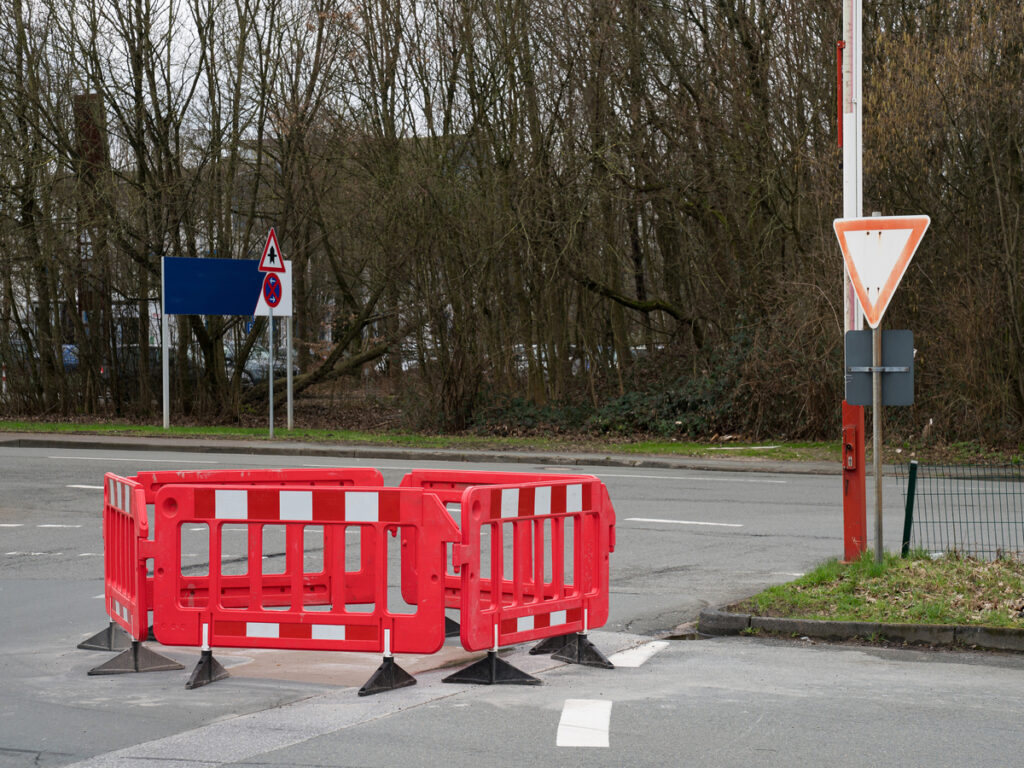
Тематические исследования Австралии
В Австралии есть много хороших примеров новых технологий барьеров безопасности.. Правительство заплатило за умные знаки безопасности на фермах, чтобы сделать проселочные дороги безопаснее. В этих проектах используется IoT, GPS, и умные светодиодные вывески. Они помогают обеспечить безопасность людей и рабочих в трудные времена на ферме.. Правительство, Компании, и технические эксперты работали вместе, чтобы создать эти системы.
- Умные знаки в стране помогают предотвратить аварии и обеспечить движение транспорта.
- Сельскохозяйственные машины используют V2I для отправки сообщений на дорожные знаки. Это предупреждает водителей и позволяет большим машинам идти первыми..
- GPS-знаки обновляют информацию в реальном времени, чтобы водители раньше замечали медленные транспортные средства.. Это помогает предотвратить внезапное торможение и несчастные случаи..
- Эти идеи решают такие проблемы, как использование больших сельскохозяйственных машин на узких дорогах и в загруженное время года..
Адаптивные системы управления дорожным движением Advantech (АТКС) показать, как работают барьеры безопасности в городах. ATCS использует ИИ, V2X, и оперативная сеть. Система меняет светофоры, используя живые данные. Это помогает городскому транспорту двигаться лучше и обеспечивает безопасность людей.. Эти истории показывают, почему активные барьеры и противотаранные автомобильные заграждения важны как в деревне, так и в городе..
Реальные приложения
Современные системы дорожных ограждений играют важную роль в строительных проектах Австралии.. Системы подъема лебедок на досках для стрел помогают предотвратить травмы при подъеме. Рабочие могут быстро и безопасно устанавливать и снимать барьеры.. Эти системы хорошо работают даже на неровной поверхности., сохранение барьеров устойчивыми и легко видимыми.
- Использование кранов и вилочных погрузчиков ускоряет и облегчает работу..
- Отчеты показывают 30% меньше травм на производстве за шесть месяцев с этими системами.
- Изменение высоты помогает водителям видеть препятствия в любых условиях..
- Прочные материалы в системах лебедок и стреловых досках означают меньше усилий и больше доверия..
- Легкость перемещения и использования издалека означает быстрое обновление и лучший контроль дорожного движения..
Металлические дорожные барьеры выбираются с учетом загруженности и скорости дороги, а также местных потребностей.. Квалифицированные команды воздвигают и следят за этими барьерами, чтобы обеспечить всем безопасность в течение длительного времени.. Нержавеющие материалы и регулярные проверки обеспечивают хорошую работу противотаранных ограждений транспортных средств и других систем безопасности.. Эти меры обеспечивают безопасность людей и помогают наладить движение транспорта по всей Австралии..
Влияние на безопасность и эффективность
Защита работников и общества
Современные барьеры помогают обеспечить безопасность работников и населения. Они используют яркие цвета и светоотражающие полосы, чтобы люди могли видеть их в любую погоду.. Рабочие могут быстро устанавливать и перемещать эти барьеры.. Это делает рабочие зоны более безопасными. Барьеры изготовлены из прочных материалов.. Они служат дольше и не падают во время шторма или сильного ветра.. Это предотвращает попадание барьеров в пробку и возникновение аварий..
Некоторые барьеры теперь имеют интеллектуальные функции.. Датчики могут предупреждать рабочих о движении барьера или о том, что автомобиль приближается слишком близко.. Эти системы помогают командам решать проблемы до того, как они станут хуже.. В оживленных городах, Барьеры безопасно направляют автомобили и людей на рабочие места. Это защищает как работников, так и население от вреда.. Улучшенный дизайн и новые технологии сделали общественную безопасность еще сильнее.. Безопасность дорожного движения теперь является главной целью во всей Австралии.
Экологические преимущества
Австралия изменила то, как барьеры помогают окружающей среде. Во многих новых барьерах используются переработанные материалы, такие как резина и пластик.. Это помогает сократить отходы. Некоторые барьеры оснащены фонарями на солнечных батареях.. Эти фонари используют энергию солнца, поэтому им не нужно ископаемое топливо. Это экономит энергию и снижает загрязнение окружающей среды..
Барьеры рассчитаны на долгий срок службы.. Они не требуют особого ремонта. Работники могут использовать эти барьеры во многих местах., а это значит меньше отходов. Например, Конусы-канализаторы с основанием из переработанной резины можно использовать снова и снова.. Это помогает Австралии достичь своих экологических целей. Барьеры, которые остаются прочными и хорошо видимыми, делают дороги безопаснее, даже после многих использований. Эти шаги показывают, что безопасность и забота об окружающей среде могут сочетаться в дорожных проектах..
Вызовы и будущие тенденции
Барьеры принятия
Австралийские дорожные власти столкнулись с некоторыми проблемами при использовании новых технологий для дорожных барьеров. Эти проблемы включают в себя:
- Безопасная система и Vision Zero идеи мало используются в сегодняшних правилах и планах.
- Старые правила и методы работы замедляют новые проекты и расходы..
- Немногие университетские курсы или тренинги преподают новые аспекты безопасности дорожного движения и строительства..
- Многие инженеры изучили старые способы и любят их использовать.. Из-за этого сложно опробовать новые способы предотвращения травм..
- На некоторых дорогах нет записей о серьезных авариях., поэтому планировщикам трудно изменить способ проектирования.
Другие вещи также имеют значение:
- Проблемы с получением таких материалов, как цемент и сталь, приводят к увеличению стоимости барьеров..
- Более строгие экологические правила означают, что производители должны использовать экологически чистые методы. Это может стоить дороже, но также приносит новые идеи..
- Производителям и работникам необходимо новое обучение, чтобы следовать новым правилам..
Эти проблемы затрудняют использование новых технологий., но они также подталкивают людей искать лучшие способы передвижения по дорогам Австралии..
Будущее дизайна дорожных баррикад
Будущее дорожных барьеров в Австралии выглядит светлым. ИИ поможет сделать барьеры умнее и быстрее реагировать. Новые системы уже используют живые данные с камер, датчики, и машины, которые разговаривают друг с другом. Эти системы помогают контролировать движение и предупреждать водителей и автомобили.. Барьеры вскоре могут «общаться» с автомобилями и меняться при изменении дорожного движения или погоды..
Автоматизированные и адаптивные шлагбаумы помогут обеспечить безопасность оживленных городских дорог. Эти барьеры могут перемещаться или менять форму, чтобы направлять автомобили или защищать рабочих.. ИИ поможет барьерам быстро реагировать на аварии или изменения на дороге. Некоторые планы надеются позволить машинам скорой помощи проезжать быстрее и менять движение транспорта во время штормов..
В будущем, Технология поможет барьерам работать с беспилотными автомобилями и системами умного города.. Это сделает дороги безопаснее и лучше для всех жителей Австралии..
Новые материалы и технологии меняют дороги в Австралии. Мобильные светофоры и обнаружение искусственного интеллекта помогают предотвратить аварии. Они также помогают работникам быстрее реагировать, когда что-то происходит.. Инструменты обучения виртуальной реальности помогают каждому лучше изучить правила дорожного движения. Это облегчает понимание людям из разных слоев общества.. Сбор и изучение данных помогает экспертам сделать правильный выбор. Расходы на эти идеи делают дороги безопаснее и лучше для всех в Австралии..
Для получения дополнительной информации о безопасности дорожного движения и последних инновациях в области управления дорожным движением, Проверьте наш блог, Все, что вам нужно знать о дорожных баррикадах для продажи.
Часто задаваемые вопросы
Какие материалы используют современные австралийские дорожные баррикады?
Производители используют алюминий., полиэтилен высокой плотности (ПНД), и композиционные материалы. Эти материалы не ржавеют и служат долго.. Они легкие, так что работники могут легко перемещать их. Многие барьеры теперь состоят из переработанных деталей, чтобы помочь окружающей среде..
Как умные баррикады повышают безопасность дорожного движения?
Умные баррикады оснащены датчиками и светодиодными фонарями.. Они помогают водителям видеть барьеры в любую погоду.. Датчики могут отправлять предупреждения работникам и центрам управления дорожным движением, если что-то не так..
Экологически безопасны ли дорожные баррикады в Австралии?
Во многих новых баррикадах используются переработанные пластмассы и металлы.. Некоторые имеют фонари на солнечных батареях.. Эти решения помогают сократить количество отходов и сэкономить энергию.. Советы и компании выбирают их, чтобы помочь окружающей среде..
Кто устанавливает стандарты для дорожных баррикад в Австралии?
The Австралийский стандарт как 1742 сериал дает основные правила. Auroads и государственные дорожные органы также помогают с проектированием и размещением.. Эти правила гарантируют, что барьеры безопасны и одинаковы везде..
Могут ли рабочие быстро установить современные баррикады?
Да. Современные баррикады легкие и имеют модульную конструкцию.. Рабочие могут их быстро устанавливать и перемещать.. Это обеспечивает безопасность рабочих зон и экономит время в дороге..

